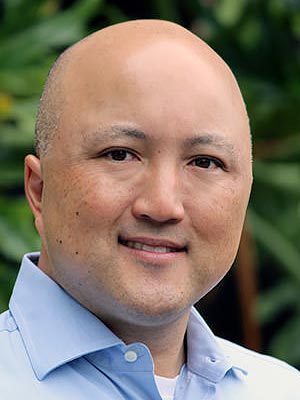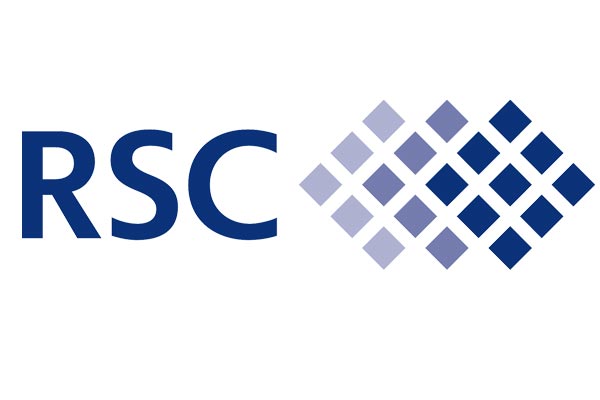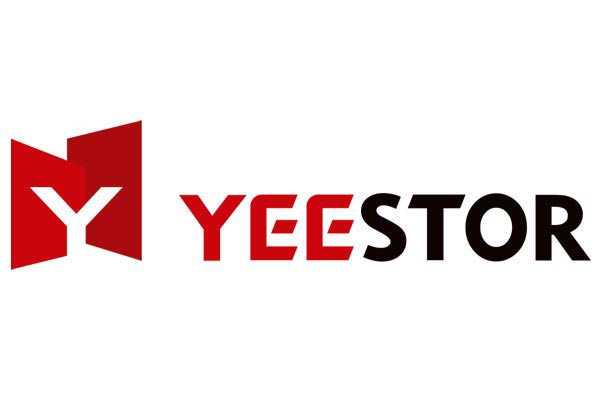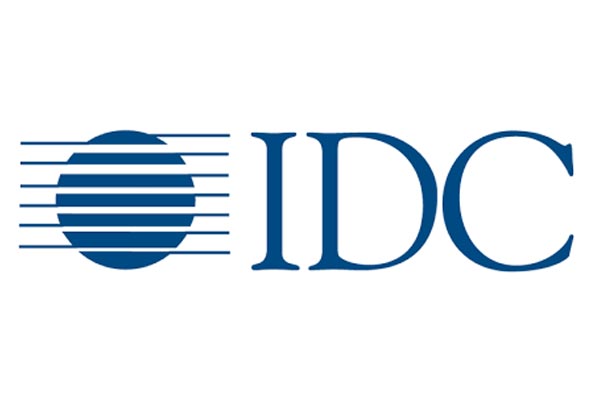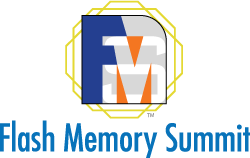Keynote 1:
How Flash Memory Brings the IoT to Life
Tuesday, August 7th, 11-11:30am

Mrinalini (Lani) Ingram
VP of Verizon’s Smart Communities
Verizon
Lani Ingram is the VP of Verizon’s Smart Communities organization and leads the company’s initiative on digital transformation of cities, universities, and sports venues. She is one of the original pioneers in the Smart Communities and IoT industry for over a decade, beginning with her role as CFO of Cisco's Globalization Center & later leading the company's Smart+Connected Communities strategy. Lani has helped to enable the Smart City industry through the development of consortiums and joint ventures and helped seed innovation through investments in new IoT start-ups across the globe. Most recently she is helping to transform US cities by making strategic acquisitions and integrating them with the vast assets within Verizon, allowing for holistic Smart City public private partnerships with cities such as Sacramento, Los Angeles, and Boston. Lani is also a frequent speaker, stays active in her community, and advocates for diversity and empowerment, giving a TEDx talk and speaking at several women conferences in several countries. Lani began her career in finance, earning her CPA at PriceWaterhouse Coopers and holds a B.A. from Gonzaga University and an executive MBA from Harvard Business School, where she is also an elected class officer.
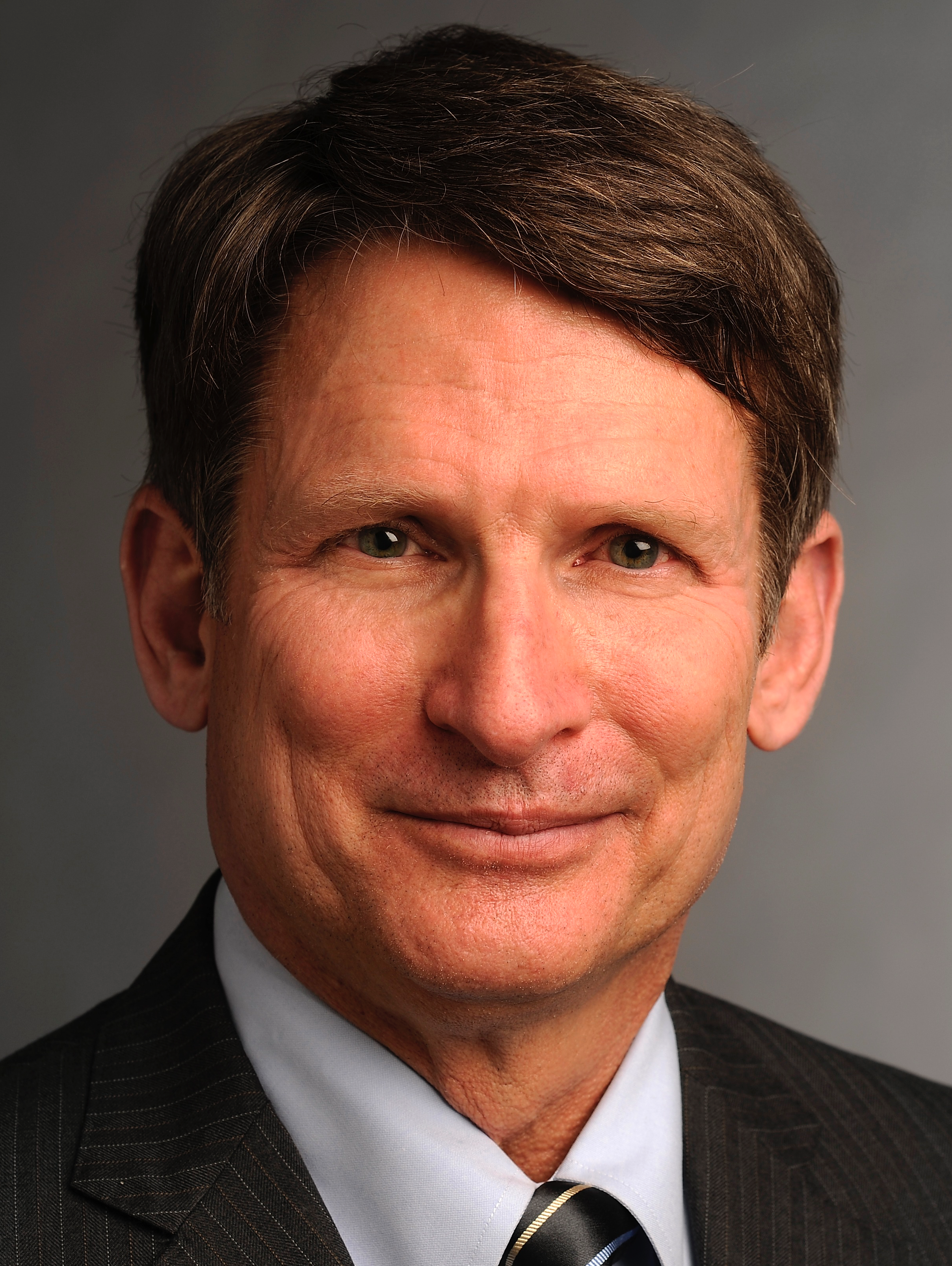
Hugh Martin
Vice President of Strategy, Smart Communities
Verizon
Hugh Martin is currently VP Strategy/Smart Communities at Verizon, where he provides vision in emerging technologies and strategies for smart cities and the Internet of Things. He is currently leading the innovation of Verizon's Smart Communities platform and 5G & Mobile Edge Compute use cases such as video and autonomous mobility. He was previously Chairman/CEO of Sensity Systems, a startup acquired by Verizon that developed products that convert older lighting systems to connected LED systems which are controllable remotely. He has been involved in several other startups in different technical areas during his 40-year career in the technology industry. He also was an Entrepreneur-in-Residence and a CEO coach at Kleiner Perkins (KPCB), a top venture capital firm. He earned a BSEE at Rutgers University (New Jersey). He is often quoted in the trade and technical press and is a frequent speaker at events, including being a featured speaker at The Data Summit. He was named CEO for Fortune magazine’s Executive Dream Team: Startup Edition in 2011 and was recognized by the World Economic Forum as a Technology Pioneer
Abstract: How Flash Memory Brings the IoT to Life
IoT is many things - connected cars, wearables, smart homes, intelligent factories, smart farms, and smart cities - and they all need lots of flash storage. The IoT must store and process data locally to keep network costs under control. Flash memory is fast, cheap, nonvolatile, rugged, and low-power, just right for being in trillions of systems everywhere in the world. Local systems can manage autonomous servers, perform event-based communications, and analyze huge amounts of data in real-time. Furthermore, the demand for storage will surely increase as new innovations and applications develop. Today we talk about retrofitting or extending things we already have, such as home appliances, vehicles, farm equipment, instruments, and medical equipment. But why not design entirely new applications based on IoT? These new concepts will be based on fog computing, virtual and augmented reality, and video or image processing that will go far beyond what we have today. Look to these new applications, which we call IoT 2.0, to use even more flash memory with total needs far exceeding today's cellphones.
About Verizon:
Verizon is one of the largest communication technology companies in the world. Every day, we connect millions of people, companies and communities with our powerful technology. We’re using our award-winning networks to make breakthroughs in interactive entertainment, digital media, the Internet of Things and broadband services for customers. Whatever the future looks like, whatever the digital world promises, we will deliver. More information is available at Verizon.
Lifetime Achievement Award
Tuesday, August 7th, 11:30-11:40am

Brian Berg
Conference Technical Chair & President
Berg Software Design
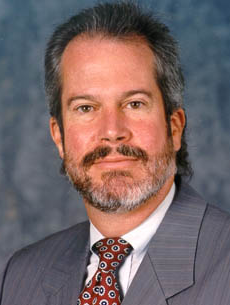
Jim Handy
Sr Program Advisor & Semiconductor Analyst
Objective Analysis

Chuck Sobey
Conference Chair & Chief Scientist
ChannelScience
Flash Memory Summit's Lifetime Achievement Award (LAA) recognizes individuals who have shown outstanding leadership in promoting the development and use of flash memory and associated or related technologies, including creating or promoting an important non-volatile memory technology, leadership in the industry, and bringing flash technology to a new and important application. By bestowing this award, Flash Memory Summit hopes to help foster further advances in the fastest-growing technology of the semiconductor industry.
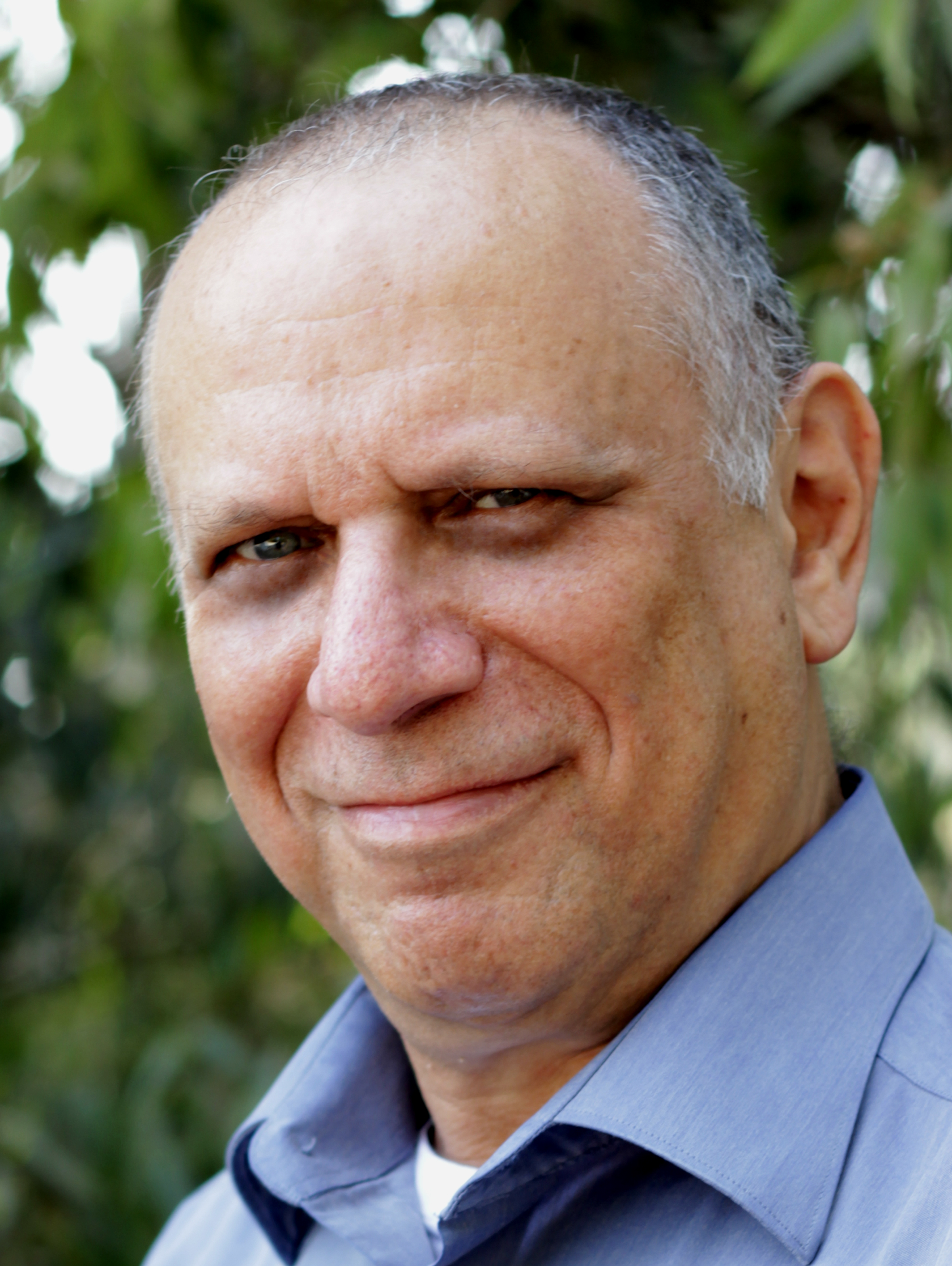
Dov Moran
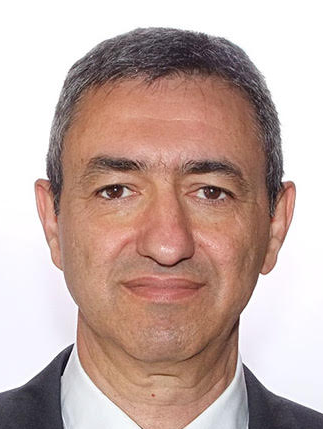
Aryeh Mergi
Dov Moran and Aryeh Mergi will be presented with the 2018 Flash Memory Summit Lifetime Achievement Award "for innovations including embedded flash for cell phones, flash file systems, and the USB flash drive."
See their 2018 Award page for more information about Dov and Aryeh, and please visit our Lifetime Achievement Awards page
Keynote 2:
Scaling Flash Technology to Meet Application Demands
Tuesday, August 7th, 11:40am-12:10pm
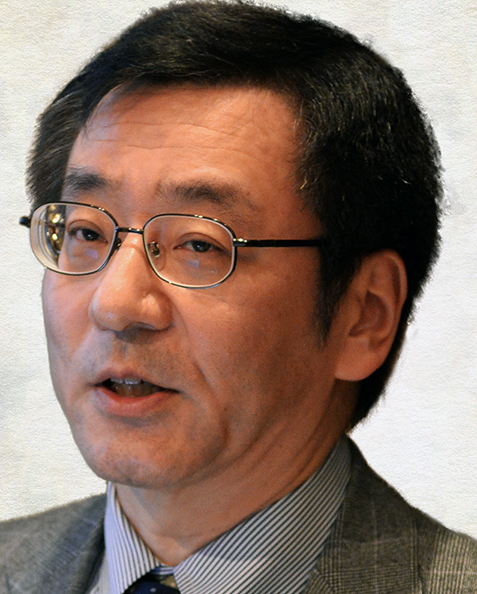
Shigeo (Jeff) Ohshima
Technology Executive, SSD Application Engineering
Toshiba Memory
Jeff Ohshima is a member of the technology executive team at Toshiba Memory, where he focuses on SSD development and applications engineering. He was previously VP Memory Technology Executive at Toshiba America Electronic Components focused on flash memory with an emphasis on SSDs. He has also been Senior Manager R&D in the advanced NAND flash memory design department, responsible for 70 nm, 56 nm, 43 nm, and 32 nm part design. He has worked on memory at Toshiba for over 30 years, including 20 years on DRAM where he acted as a lead design for application specific memories and did technical marketing. Ohshima has served as a Visiting Research Scientist at Stanford University. He holds a BSEE and MSEE from Tokyo's Keio University.
Abstract: Scaling Flash Technology to Meet Application Demands
Flash memory has rapidly become the key to the storage systems that enable the "digital transformation" in enterprise and hyperscale data centers. Fortunately, technology advances can meet the ever-larger storage needs of such widespread applications as real-time business analytics, databases, transaction processing, artificial intelligence, machine learning, security, video transmission, and the Internet of Things. These advances also provide the higher data rates required by pervasive technologies such as NVMe™, and NVMe over Fabrics (NVMe-oF™) to scale and share SSD storage. BiCS FLASH™ 96-layers and beyond, increased numbers of bits per cell, and hierarchical flash architectures offer capacity scaling in the same, or even smaller, form factors. Specialized flash versions, such as QLC and Toshiba's XL flash, create new deployment models that lower costs, increase performance, and shrink footprints. Over the next few years, storage designers can expect flash technology to continue to keep pace with the demands of big data and increasingly complex applications.
About Toshiba Memory Corporation:
Toshiba Memory Corporation, a world leader in memory solutions, is dedicated to the development, production and sales of flash memory and SSDs. In April 2017, Toshiba Memory was spun off from Toshiba Corporation, the company that invented NAND flash memory in 1987. Toshiba Memory pioneers cutting-edge memory solutions and services that enrich people's lives and expand society's horizons. The company's innovative 3D flash memory technology, BiCS FLASH™, is shaping the future of storage in high density applications including advanced smartphones, PCs, SSDs, automotive and data centers. More information is available at Toshiba Memory.
Keynote 3:
Creating the Next Generation of Data-Driven Infrastructure
Tuesday, August 7th, 12:10-12:40pm
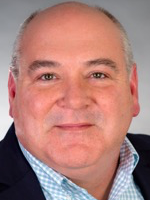
Phil Bullinger
Sr VP/GM of Data Center Systems
Western Digital
Phil Bullinger is Sr VP/GM of Data Center Systems (DCS) at Western Digital, where he focuses on the innovation and growth of the company's platforms and systems business, delivering data-centric solutions for enterprise, cloud, and high-performance deployments in core, regional, and local datacenters. He has a solid 30-year track record of building successful, high growth businesses in the storage industry, and has guided the development of a wide range of products, from silicon to systems, that have defined and led their market segments. Bullinger's leadership of the DCS business aligns with Western Digital's focus on creating environments for data to thrive, driving vertical innovation from hard disk drives and flash memory technologies to advanced personal devices, system-level solutions, and more. Before joining Western Digital, Bullinger was Sr VP/GM at Dell EMC where he was responsible for the Isilon product line for storing unstructured data. He has also held executive positions at Oracle as Sr VP of SAN/NAS Storage, and at LSI as Executive VP/GM for the Engenio Storage Group. He holds five patents in storage technology and integrated circuit design. He earned an MS magna cum laude in Management of Technology from the National Technological University and a BS magna cum laude in electrical and computer engineering from Kansas State University.
Abstract: Creating the Next Generation of Data-Driven Infrastructure
Our world is becoming more data-centric every day. Big data is everywhere, and new high-performance applications have arisen to take advantage of it. There is an increasing diversity of such applications including artificial intelligence, machine learning, autonomous machines, smart cities, virtual and augmented reality, and hyper-analytics. How can we best orchestrate, scale, and manage a data-driven infrastructure from the core to the edge? Such infrastructures must easily provision all resources, and maximize performance, scalability, and efficiency. To deploy them requires a convergence of emerging technologies, open standards, innovation, and a growing ecosystem.
About Western Digital:
Western Digital creates environments for data to thrive. The company is driving the innovation needed to help customers capture, preserve, access and transform an ever-increasing diversity of data. Everywhere data lives, from advanced data centers to mobile sensors to personal devices, our industry-leading solutions deliver the possibilities of data. Western Digital® data-centric solutions are marketed under the G-Technology™, HGST, SanDisk®, Tegile™, Upthere™ and WD® brands More information is available at WD
Special Presentation 1: TechTarget
Tuesday, August 7th, 1:40-1:50pm

Jillian Coffin
Vice President and Publisher
TechTarget
Jillian is the Vice President and Group Publisher for TechTarget’s Storage, Cloud and Data Center business units. She oversees the editorial, audience development and sales & consulting efforts across website communities like SearchStorage.com, SearchCloudComputing.com and SearchITchannel.com. Jillian has been a leader in the data storage community for 12+ years sharing purchase intent data to both established and emerging storage vendors who need to better understand the changing market dynamics and maximize growth opportunities. TechTarget is the leading source of independent enterprise storage & flash technology content on the web and is known as a trusted resource to help IT and Business leaders make informed decisions.
Keynote 4:
Meeting the Memory Challenges of the New Data Economy
Tuesday, August 7th, 1:50-2:20pm
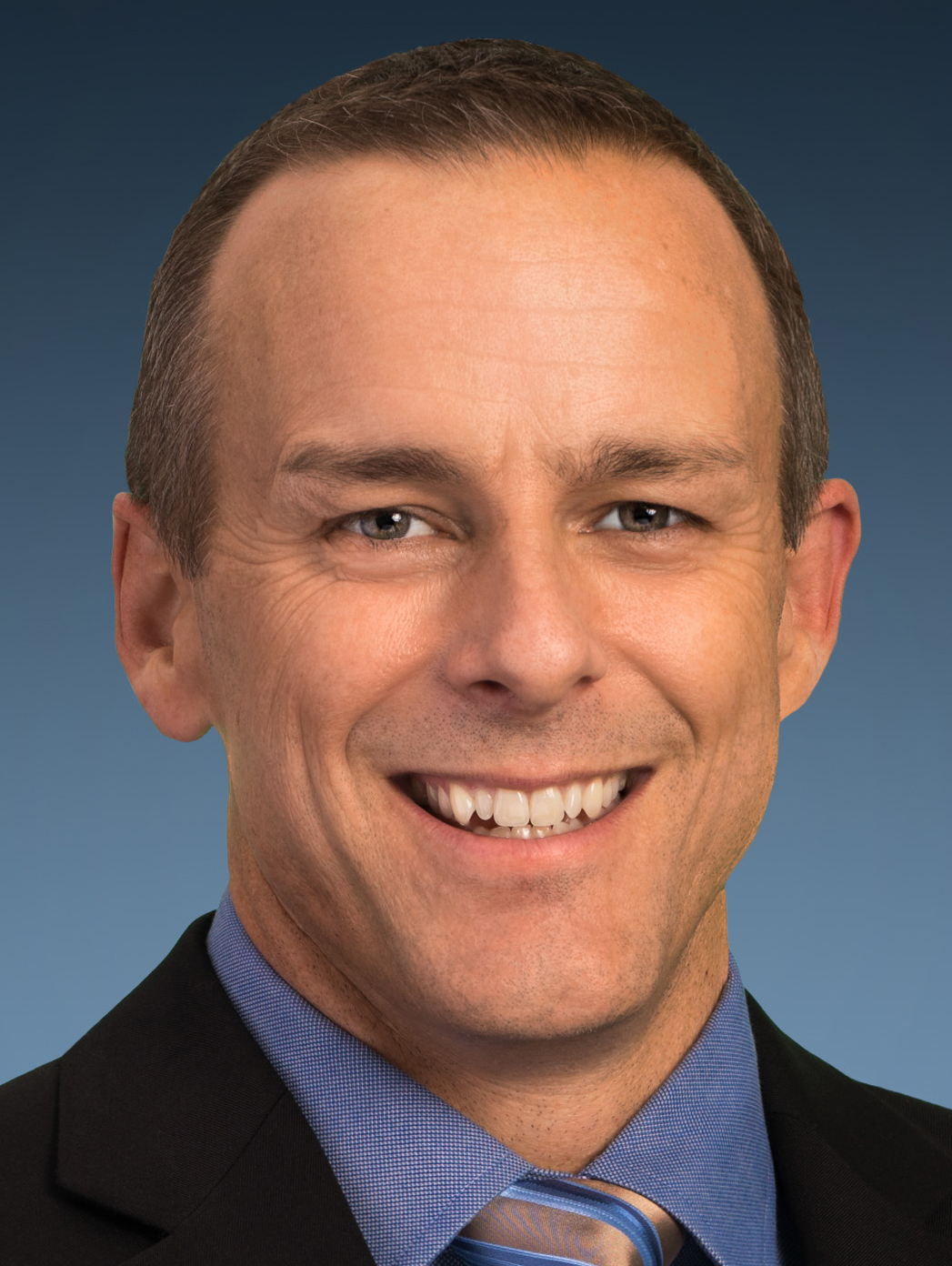
Derek Dicker
Corporate Vice President and General Manager, Storage Business Unit
Micron
Derek Dicker is Corporate VP/GM Storage Business Unit at Micron Technology. He is responsible for building world-class storage products and value-added solutions based on Micron’s nonvolatile memory technology. He addresses the growing opportunities in large market segments such as cloud, enterprise, and client computing. Before joining Micron, Dicker was VP/Business Unit Manager at Microsemi/’PMC-Sierra. He was instrumental in guiding PMC to a leadership position in flash controllers. His team introduced the first and fastest merchant enterprise NVMe SSD controller and a new category of PCIe storage switches. He previously worked at Intel in sales and marketing positions, including being chief of staff/technical assistant to the executive vice president and general manager of the Intel Communications Group. Dicker earned a BS in Computer Science and Engineering from UCLA, and later attended INSEAD’s Young Manager Program and the Stanford Executive Program
Abstract: Meeting the Challenges of the New Data Economy
In the new data economy, success depends on how much data organizations can collect and how effectively and how quickly they can convert it into business intelligence and use the results to make decisions. Artificial intelligence and machine learning play particularly critical roles in data analysis. Memories of all kinds are essential to store, analyze, and deliver in real-time the insight organizations must have to survive and prosper.
Advances in memory capacity, capabilities, and cost are necessary to meet the challenges of big data and real-time analysis. Improvements in 3D NAND processes and developments in higher-capacity approaches such as QLC NAND are particularly important. New technologies must meet the needs of emerging workloads, applications, and programs that demand near-real-time data access, processing, and analysis.
About Micron:
Micron is one of the world's leading providers of advanced semiconductor memory solutions. Micron’s DRAM, NAND and NOR flash components are used in today’s most advanced computing, networking, storage, and communications products, including computers, workstations, servers, storage arrays, cellphones, wireless devices, digital cameras, gaming systems, and many embedded applications. More information is available at Micron.
Keynote 5:
3D NAND Advances Translate Directly into More Powerful Storage Systems
Tuesday, August 7th, 2:20-2:50pm
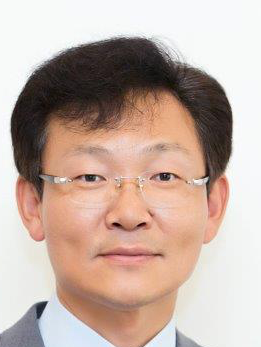
Jinsoo (Jason) Kang
Corporate VP and Head of the NAND Product Planning Office
SK hynix
Jinsoo (Jason) Kang is Corporate VP and Head of the NAND Product Planning Office at SK hynix, where he is responsible for NAND and solution product planning and business development. He helped lead the introduction of the company's consumer and industrial SSDs equipped with internally developed firmware and controllers as well as SK hynix's own 4th generation 3D NAND flash chips. He has 24 years experience working at SK hynix in a wide range of areas from design-in reliability to applications engineering, including positions as a marketing manager and a NAND solutions team leader. and a NAND solutions team leader. He holds a BSEE from KAIST (Korea Advanced Institute of Science and Technology).
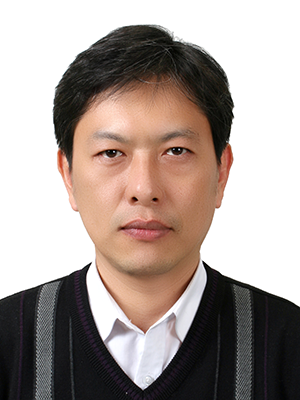
Hyun Ahn
Sr VP NAND Development/Business Strategy
SK hynix
Hyun Ahn is Sr VP NAND Development/Business Strategy at SK hynix. He is responsible for directing activities related to SSDs, eMMC, UFS, and next generation 3D NAND. A 19-year veteran of SK Hynix, he has worked on developing NAND integration process technology, directing business strategy, making strategic investments, and executing merger and acquisition activity among startups (for future business). He earned his PhD from Seoul National University in Korea.
Abstract: 3D NAND Advances Translate Directly into More Powerful Storage Systems
3D NAND technology keeps advancing rapidly with 4th generation processes now in mass production, 5th generation moving into mass production, and 6th generation and QLC technology in ongoing development. Chips with up to 200 stacks are on the horizon. Meanwhile, there are plenty of new workloads requiring high-performance, high-capacity storage systems such as cloud services, 5G networks, edge computing, and IoT. Such systems, in turn, require high-speed, high-capacity storage devices, particularly if they want to get full value out of new interface technologies such as high-speed PCIe and NVMe-oF. The result is a happy convergence. Technology advances lead to the improvements in capacity, performance, and reliability the latest storage systems require. SSD manufacturers can take advantage of them to build devices capable of implementing new features such as multi-stream, NVM sets, and transactional functions.
About SK hynix:
Established in 1983 in the Republic of Korea, SK hynix is a company that specializes in semiconductors, our main products are DRAM and NAND flash. SK hynix is the second-largest memory chip manufacturer in the world, leading the global memory semiconductor market and the third-largest company in the semiconductor field. As the technology and market share leader, SK hynix is staying ahead of 3D NAND flash industry developments through introduction of higher-speed, higher-capacity products.
Recently SK hynix announced S72 512Gb 3D NAND based SATA & PCIe NVMe SSD line-up to deal with dynamic requirement from the storage market such as general client applications and servers, network storage arrays (all-flash arrays and hybrid flash arrays), and hyperscale cloud service provider datacenters. In addition to its stand along NAND flash products, SK hynix provides the best NAND solutions to meet a variety of customer needs through Multi Chip Package(MCP), embedded Flash and SSD solutions. More information is available at SK hynix.
SNIA: Global Leader in Storage Standards and Education
Tuesday, August 7th, 2:50-3:00pm

Michael Oros
Executive Director
SNIA
Michael Oros is the Executive Director of the Storage Networking Industry Organization (SNIA), the leading group for vendor-neutral standards and industry promotion. He oversees the group’s industry collaboration, standards, and educational efforts. He has 25 years experience in the high-technology industry. Before joining SNIA, he worked at Intel where he oversaw technology initiative and collaboration on open standards. He played a key role in many important industry and standards groups including PCI Express, InfiniBand, and OpenFabrics. He earned an MBA and BS in international business from United States International University.
Abstract: SNIA: Global Leader in Storage Standards and Education
The Storage Networking Industry Association (SNIA) has been a worldwide leader in storage standards and education for over 20 years. Activities of particular interest to the non-volatile memory community are:
• NVM programming model provides a standard for supporting non-volatile memory in software
• Solid State Storage (SSS) Performance Test Specification defines device-level tests and methodologies for solid-state devices
• Persistent Memory and NVDIMM Special Interest Group accelerates the awareness and adoption of persistent memory and NVDIMMs in storage systems
About SNIA:
SNIA also produces important technology events such as the Persistent Memory Summit and Storage Developer Conference
SNIA has over 170 organizational members and 2,500 active contributing members. If you and your organization aren’t among them, they should be! More information is available at SNIA
Keynote 6:
Unleashing 3D NAND's Potential with an Innovative Architecture
Tuesday, August 7th, 3:00-3:30pm
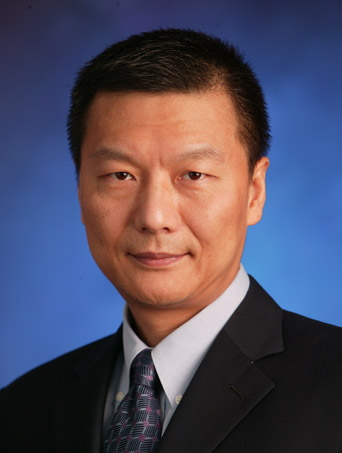
Simon Yang
CEO
Yangtze Memory Technology
Simon Yang is the CEO of the new Yangtze Memory Technology (YMTC.) He plans to lead it into the large-scale memory field based on its 3-D NAND technology. He expects to make YMTC a major force in worldwide memory markets at a time of unprecedented opportunities and challenges. Before founding YMTC, he was active in the foundry business as the CEO at XMC, COO/CTO at SMIC, and CTO/Sr VP at Chartered Semiconductor. He has over 20 years experience in technology, holds over 30 patents, and has published over 30 articles. He earned a doctorate and a master's degree at Rensselaer Polytechnic Institute (RPI) and a bachelor's degree from the Shanghai University of Science and Technology.
Abstract: Unleashing 3D NAND's Potential with an Innovative Architecture
3D NAND has rapidly become the standard technology for enterprise flash, and is also gaining widespread use in other applications as well. However, continued improvements are essential to achieve higher performance, higher bit density, and lower cost. Current processes involve complex compromises among thermal budget, film stress, and device performance. They also waste silicon area and process steps by forming array and peripheral CMOS side-by-side. A new approach overcomes these challenges to unleash the full potential of 3D NAND. It provides a continued increase in bit density while also achieving higher performance, lower cost, faster development cycles, and shorter time to market for new product introductions. Important challenges remain to be solved, but major opportunities now exist for meeting the ever-increasing needs of smartphone, SSD, and IoT applications.
About Yangtze Memory:
Yangtze Memory Technologies (YMTC) is a memory solutions company headquartered in Wuhan, China. YMTC designs, manufactures and sells memory products and solutions for a broad range of applications including mobile devices, computing, datacenters, and consumer electronics for customers around the world.
Founded in July 2016, YMTC is funded by joint forces from Tsinghua Unigroup, China's National IC Fund and Hubei Local IC Funds with $24B total investments. It is the first and biggest memory initiative in China.
YMTC successfully designed and manufactured the first 3D NAND flash chip in China in 2017. YMTC is committed to becoming a world leading memory solutions provider through technology innovations. More information is available at Yangtze Memory
Keynote 7:
Break Through the Bottlenecks with Optane, Store More with 3D NAND
Wednesday, August 8th, 11:00-11:30am

Robert (Rob) B. Crooke
Sr. VP/GM, Intel Corporation
Intel
Rob Crooke, Sr VP/GM of Intel's Non-Volatile Memory (NVM) Solutions Group, leads a worldwide organization responsible for NVM technology design and development, complete SSD system hardware and firmware development, wafer and SSD manufacturing, and marketing for Intel's component, module, and SSD NVM businesses. He previously led the Intel group responsible for developing world-class, low-power processors and enabling technology for SoCs. A 30-year Intel veteran, he earned a BS in computer systems engineering from the University of Massachusetts at Amherst.
Abstract: Break Through the Bottlenecks with Optane, Store More with 3D NAND
Billions of connected devices are creating huge amounts of data that organizations must store, process, analyze, and (finally) monetize. Computer systems at all levels must have large banks of lower-cost, higher-capacity storage to perform the required tasks. How can developers build such storage? One part of the answer is 3D XPoint, which offers storage at memory speeds for high-performance caches and main storage. Another part is new QLC 3D NAND technology, which provides high-capacity, low-cost solid state storage for secondary stores and less frequently accessed data. Organizations of all sizes are using both technologies to modernize their data centers to meet the challenges of big data, the IoT, artificial intelligence, machine learning, real-time analytics, and mobile everywhere.
About Intel:
You may know us for our processors. But we do so much more. Intel invents at the boundaries of technology to make amazing experiences possible for business and society, and for every person on Earth.
Harnessing the capability of the cloud, the ubiquity of the Internet of Things, the latest advances in memory and programmable solutions, and the promise of always-on 5G connectivity, Intel is disrupting industries and solving global challenges. Leading on policy, diversity, inclusion, education and sustainability, we create value for our stockholders, customers, and society. More information is available at Intel.
Keynote 8:
Data Explosion Demands Ethernet-Based Fast Flash Fabrics
Wednesday, August 8th, 11:30-Noon
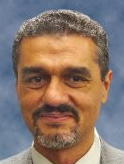
Ahmet Houssein
VP Marketing & Strategic Development
Solarflare
Ahmet Houssein is VP Marketing/Strategic Development at Solarflare Communications, a developer of high-speed connectivity for data centers. He is responsible for the company's strategies and programs to drive revenue growth, enter new markets, and expand brand awareness. Before joining Solarflare, Houssein was SVP/GM at QLogic, where he successfully delivered first to market 25Gb Ethernet products and secured key design wins at HP and Dell. He has over twenty-five years of experience in the server, storage, data center, and networking industries, and held senior level executive positions in product development, marketing, and business development at Intel and Honeywell. A key leader in the creation of the Infiniband and PCI Express industry standards, Houssein received the Intel Achievement Award and was a founding board member of the Storage Network Industry Association (SNIA). He has presented keynotes at past Flash Memory Summits for both Solarflare and QLogic.
Abstract: Data Explosion Demands Ethernet-Based Fast Flash Fabrics
Today's big data problems require huge amounts of fast-access storage with high scalability and low latency. Flash area networks can provide the required microsecond access times at a reasonable cost. They utilize highly virtualized industry-standard servers connected via a high-speed network based on NVMe-over-Fabrics (NVMe-oF) with TCP as the fabric and standard Ethernet switches. Flash storage from hundreds or thousands of servers appears from any point on the network. The result is a high-performance stack with low latency, low cost, and easy deployment. Systems can access enterprise-class storage located anywhere on the network while delivering local storage performance.
Tomorrow's even bigger datasets can be handled by adding servers, moving to widely available higher-speed Ethernet versions, or introducing high-speed persistent memory as it becomes available. Cloud providers, enterprises, and service providers can get high value out of their storage investments for solving problems in real-time analysis, artificial intelligence, machine learning, databases (including NoSQL), video and image processing, and business intelligence.
About Solarflare:
Solarflare is pioneering server connectivity for neural-class networks. From silicon to firmware to software, Solarflare provides a comprehensive, integrated set of technologies for distributed, ultra-scale, software defined datacenters.
The Solarflare XtremeScale Architecture is a design framework which includes a comprehensive suite of features for ultra-scale environments: High bandwidth, ultra-low latency, ultra-scale connectivity, software defined, secure with hardware firewalls, and instrumented for line-speed telemetry. More information is available at Solarflare.
Keynote 9:
Adaptable Storage Acceleration Platforms for Exabyte-scale Data Centers
Wednesday, August 8th, 1:00-1:30pm
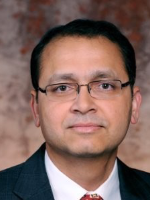
Manish Muthal
VP of Datacenter Marketing
Xilinx
Manish Muthal is Vice President, Data Center for Xilinx. He is responsible for driving Xilinx's Data Center business with Hyperscale, HPC, and Enterprise customers across applications like Machine Learning, Databases, Big Data Analytics, Video Transcoding, and Storage/Network acceleration. He was previously Vice President of Product Marketing at Broadcom, responsible for Broadcom's multi-core MIPS and ARM64 processors for Communications, Storage, and Server applications. Prior to Broadcom, he was Vice President of Strategic Planning, Marketing and Architecture at Seagate and LSI, responsible for their Flash product strategy and business execution. He is a seasoned executive with business strategy, marketing, and technology domain experience across Compute, Networking, and Storage substrates within Hyperscale Data Center, Enterprise Data Center and Carrier Infrastructure. Manish earned a MS in Computer Engineering from UC Santa Barbara, and a BE in Electronics and Telecommunications from the Visvesvaraya National Institute of Technology, India.
Abstract: Adaptable Storage Acceleration Platforms for Exabyte-scale Data Centers
The emergence of cloud computing has radically transformed almost every major industry. Exponential growth of compute requirements within cloud computing environments is now driving the need for heterogenous computing architectures, which rely on accelerators to deliver power efficient scaling of compute performance. Further compounding the computing challenges is the dawn of AI and the explosion in the sheer amount of data that needs to be stored and processed.
A new class of storage acceleration platforms are needed to enable tomorrow's exabyte-scale datacenters. The rapid deployment of high performance NVMe and persistent memory architectures will accelerate the adoption of such storage acceleration platforms. A key element in achieving performance scalability will be to move the acceleration closer to the data, so it becomes part of the storage subsystem and can scale with storage capacity. These accelerators will need to be easy to deploy and manage, and highly adaptable to the ever changing workloads within cloud environments.
This keynote will focus on emerging server and storage architectures where compute acceleration is moved closer to data, thus providing the foundation for emerging and next generation cloud datacenters.
About Xilinx:
Xilinx’s portfolio of software defined and hardware optimized solutions include proven C and IP based design tools that support the development of ‘software defined hardware’, and a new family of software development environments that supports the development of ‘software defined systems’. More information is available at Xilinx.
Keynote 10:
Optimizing Storage Solutions for Data Center Applications
Wednesday, August 8th, 1:30-2:00pm
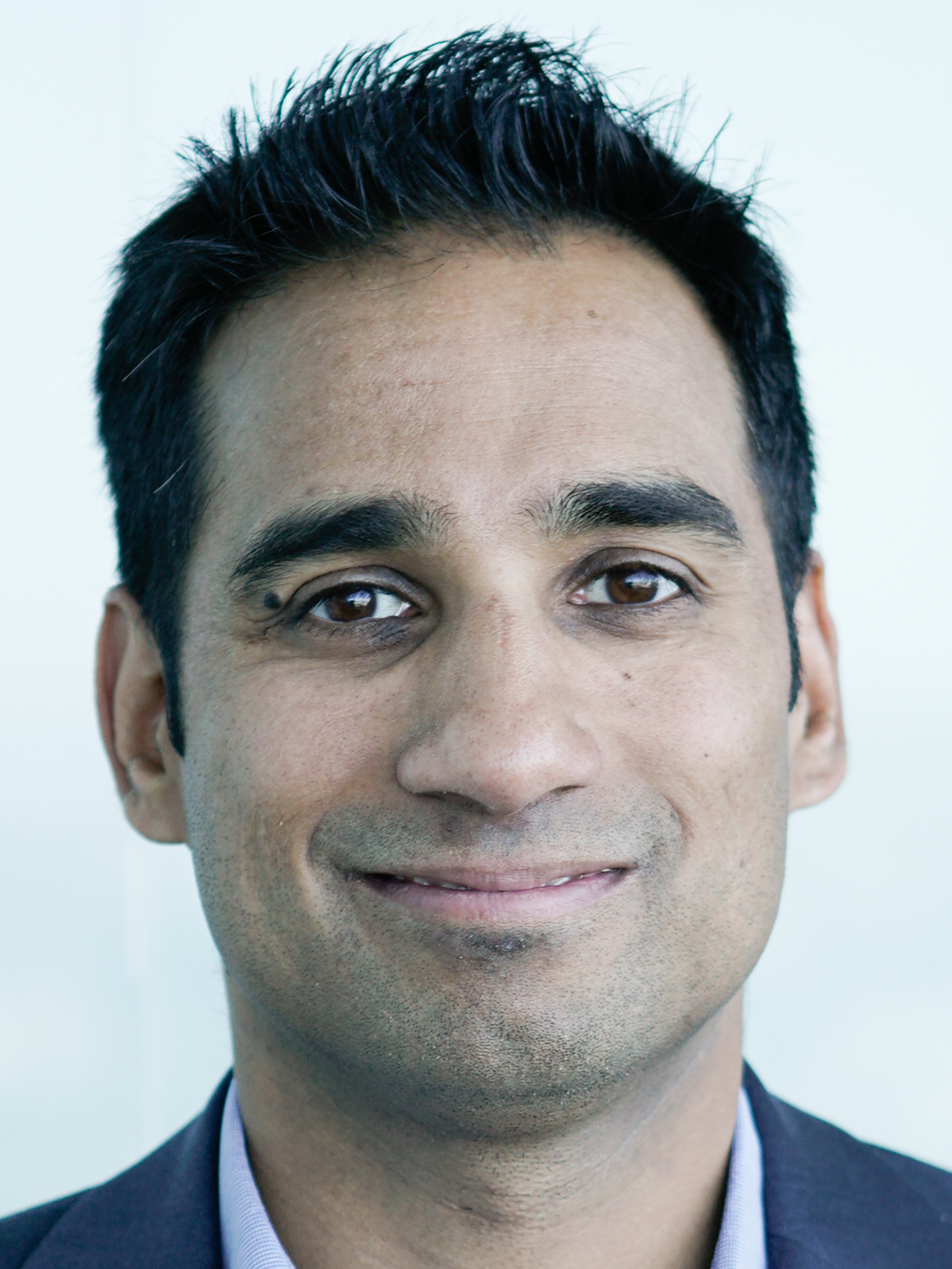
Nigel Alvares
VP of SSD & Data Center Storage Solutions
Marvell
Nigel Alvares is VP SSD & Data Center Storage Solutions at Marvell Semiconductor, where he is responsible for SSD controllers and data center storage chipsets. Under his leadership, Marvell is driving new solutions to address the needs of virtualized, multi-tenant cloud data centers, edge computing infrastructures, and client devices. Before joining Marvell, Nigel worked for Inphi Corporation, where he helped launch innovative non-volatile memory chipsets for emerging NVDIMMs. Prior to Inphi, Nigel was a founding member of PMC-Sierra's Enterprise Storage Division and helped build it into the company's largest business with its widely deployed controller and disk interconnect products. He has over 20 years of experience in data storage and networking. He earned a BSEE from McGill University (Montreal, Canada) and an MBA from Simon Fraser University (Vancouver, Canada).
Abstract: Optimizing Storage Solutions for Data Center Applications
Cloud and enterprise data centers are increasingly highly-virtualized, multi-tenant, scale-out environments supporting many workloads with differing storage requirements. To help them run at top speed, they need to be able to give each application exactly the storage it needs with the performance it requires. That is, storage must be disaggregated (separated from compute and networking). The result is high utilization, fast and consistent response times, low latency, and the scalability needed to keep up with the data explosion. Disaggregated storage, connected via the latest NVMe and NVMe-oF industry standards, is essential for the latest applications such as real-time analytics, machine learning, deep learning, artificial intelligence, security, video and image processing, and the Internet-of-Things (IoT). Data centers can use it to reduce their total cost of ownership while delivering near-real-time results.
About Marvell:
Marvell first revolutionized the digital storage industry by moving information at speeds never thought possible. Today, that same breakthrough innovation remains at the heart of the company's storage, networking and connectivity solutions. With leading intellectual property and deep system-level knowledge, Marvell's semiconductor solutions continue to transform the enterprise, cloud, automotive, industrial, and consumer markets. More information is available at Marvell.
Innovation Leader Awards
Wednesday, August 8th, 2:00-2:10pm

Frank Berry
President/Chief Analyst
IT Brand Pulse
Innovation Leader Awards
The IT Brand Pulse awards, covering a wide range of products including networking, servers, and storage, measure the opinions of customers at major installations. Monthly surveys covering a product category ask respondents to choose overall market leaders, as well as specific leaders for price, performance, reliability, service and support, and innovation.
The awards thus represent what key customers think of products. Respondents are IT professionals from leading industry, university, medical, and government installations. For example, respondents to recent surveys have included:
• Server Administrator/Architect - American Airlines
• Data Center Manager - Scripps Health
• Storage Specialist, Aetna
About IT Brand Pulse:
IT Brand Pulse is a trusted source of data and analysis about IT infrastructure, including servers, storage, and networking. It is headed by Chief Analyst Frank Berry, former VP Marketing at QLogic and Quantum and a 30-year veteran of the technology industry. More information is available at IT Brand Pulse
Keynote 11:
Computational Storage: Acceleration Through Intelligence & Agility
Wednesday, August 8th, 2:10-2:40pm
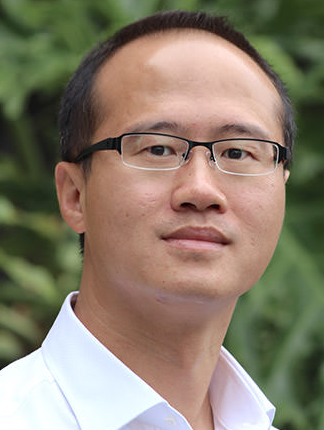
Dr. Hao Zhong
CEO & Co-Founder
ScaleFlux
Hao Zhong is CEO/Co-Founder of ScaleFlux, a developer of high-performance flash controllers and appliances. He is a passionate technology innovator and entrepreneur who has developed many cutting-edge technologies and products in the data storage and computing industries. He currently focuses on delivering computational storage to the worldwide market.
Before co-founding ScaleFlux, Hao was a Senior Director at Fusion-io where he led the flash memory technology team and enabled LDPC in industry-leading PCIe SSDs. He has also been an engineering director at SandForce working on SSD controller chips and an architect at LSI, where he was sa key contributor to the industry leading LDPC read channel chip. Hao earned a PhD in Electrical Engineering from Rensselaer Polytechnic Institute (New York). He holds over 80 storage patents.
Abstract: Computational Storage: Acceleration Through Intelligence & Agility
Adding intelligence to flash storage is an obvious idea. It avoids slow transfers of large data stores, reduces the burden on networks and central computing resources, promotes scalability, and reduces latency. However, as usual, the devil is in the details. The added hardware must provide host-flash control and management to optimize applications' use of storage. It must also be agile, that is, programmable to allow new compute functions to be integrated directly into the system. Following the principles of intelligence and agility allows Computational Storage to evolve to meet changing customer needs. It can then handle rapidly expanding demands from applications such as databases, analytics, financial technology, content delivery networks, artificial intelligence, and machine learning, to maximize the benefits of flash deployments.
About ScaleFlux:
ScaleFlux is the pioneer in providing Computational Storage Subsystem (CSS) solutions at scale. CSS is the foundation for modern, data-driven infrastructure that enables responsive performance, affordable scaling, and agile platforms for compute and storage I/O intensive applications. Founded in 2014, ScaleFlux is a well-funded startup with leaders proven to deploy complex computing and solid-state storage solutions in volume. More information is available at ScaleFlux.
Keynote 12:
Empowering the Gen-4 Storage Transition
Wednesday, August 8th, 2:40-3:10pm
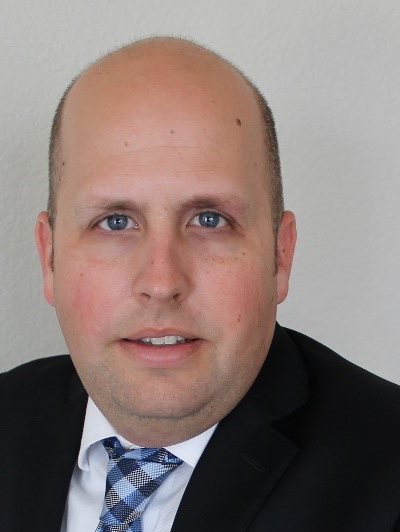
Andrew Dieckmann
VP Marketing/Applications Engineering
Microsemi
Andrew Dieckmann is VP of Marketing and Applications Engineering for Data Center Solutions Division at Microsemi, a wholly owned subsidiary of Microchip Technology. He is responsible for product management, product marketing, product strategy and the application engineering teams supporting Microsemi's broad portfolio of storage solutions including SSD controllers, RAID solutions, HBAs, PCIe switches and SAS expanders. Prior to Microsemi, Andrew was a long-time member of PMC-Sierra's Enterprise Storage Division where he helped build the business from inception to become the largest division at the company at PMC-Sierra when it was acquired by Microsemi. Andrew earned a BSEE degree from Lakehead University in Ontario, Canada.
Abstract: Empowering the Gen-4 Storage Transition
The Gen 4 speed transition will double the performance per lane of storage media! However, there is much more to the transition than just doubling clock speeds. The associated storage interconnect must also keep pace. Furthermore, composability, programmability, data protection, management, and security in the storage subsystem are all becoming more important as the applications of flash storage continue to diversify. And there's an entire ecosystem to consider besides - entire platforms and software must support the increased speed as well. It will take a system-wide effort with uniquely programmable and highly flexible solutions to enable the Gen-4 transition.
About Microsemi:
Microsemi Corporation offers a comprehensive portfolio of semiconductor and system solutions for aerospace & defense, communications, data center and industrial markets. Products include high-performance and radiation-hardened analog mixed-signal integrated circuits, FPGAs, SoCs and ASICs; power management products; timing and synchronization devices and precise time solutions, setting the world’s standard for time; voice processing devices; RF solutions; discrete components; enterprise storage and communication solutions, security technologies and scalable anti-tamper products; Ethernet solutions; Power-over-Ethernet ICs and midspans; as well as custom design capabilities and services. Microsemi is headquartered in Aliso Viejo, Calif., and has approximately 4,800 employees globally. More information is available at Microsemi.
Keynote 13:
Using Open Channel SSDs to Improve QoS for Datacenter Applications
Thursday, August 9th, 11:00-11:30am
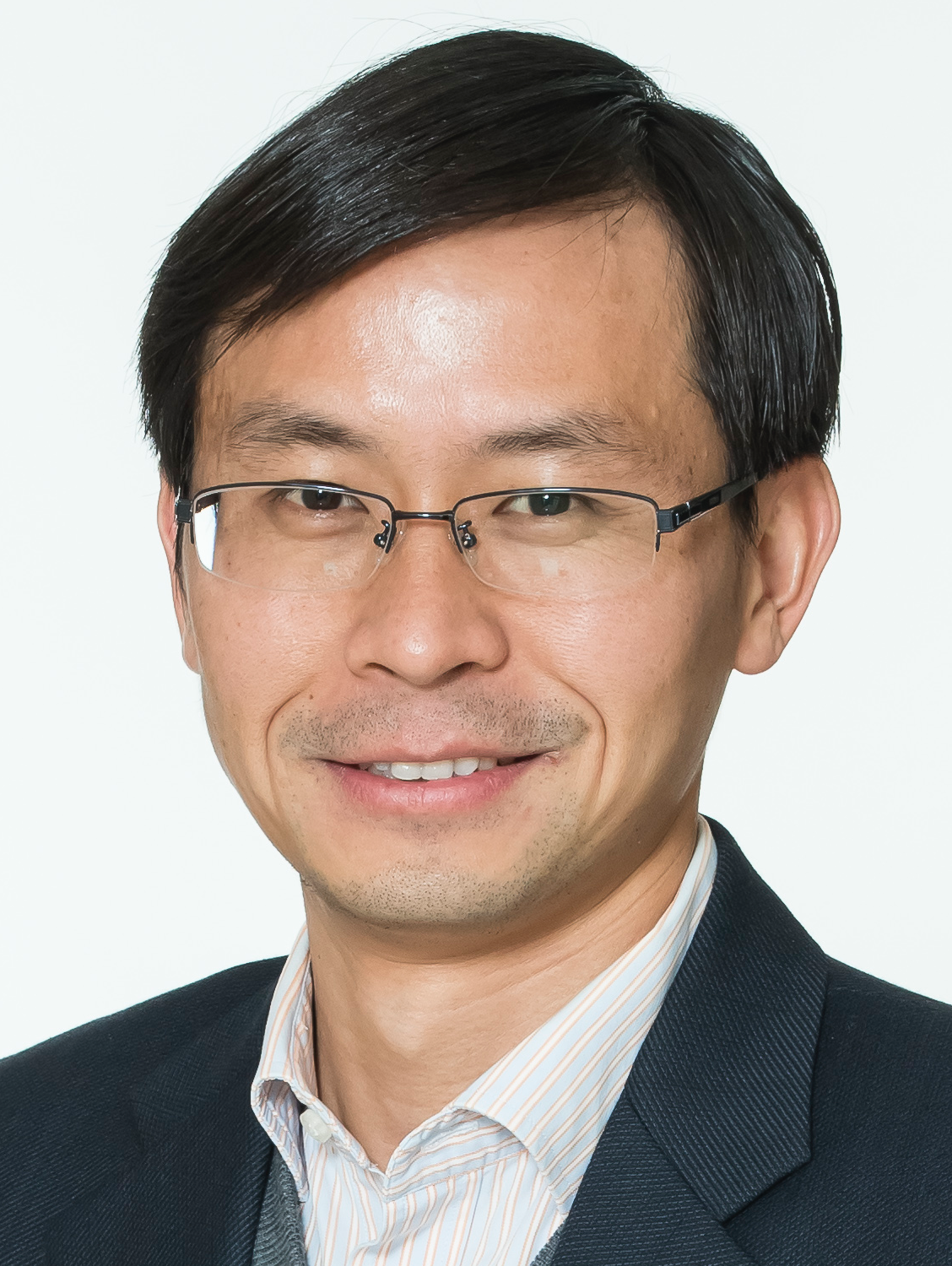
Xueshi Yang
CEO & Co-founder
Shannon Systems
Dr. Yang co-founded Shannon Systems in 2011 and as CEO, led the development and commercialization of enterprise-grade PCIe SSDs that were the industry’s first in terms of storage capacity and scalability, ultra-low latency and low-power envelope. Prior to Shannon, Dr. Yang was the chief architect at Marvell of its first generations of SSD controllers, a research staff at Seagate and postdoctoral researcher at Princeton University. He holds a PhD in Electrical Engineering from Drexel University and a BS in Electrical Engineering from Tsinghua University in China. Dr. Yang has more than 100 US patents granted or pending relating to SSDs.
Abstract: Using Open Channel SSDs to Improve QoS for Datacenter Applications
A major limitation in deploying SSDs in datacenters is that applications and systems can generally access them only as simple block devices. This is the only approach supported by conventional SSDs that are accessed through a flash translation layer (FTL) locked into the firmware. Open channel SSDs (OCS) eliminate this restriction and allow host applications to access the flash memory directly. The applications can then manage the flash memory and the I/O accesses to follow protocols and implement features specifically tailored to their needs. The result is a significant improvement in the application's performance, consistency, and robustness (that is, its total quality of service or QoS). Actual implementations of OCS show typical architectures and engineering considerations.
About Shannon Systems:
Shannon Systems is a leading supplier of enterprise-grade all-flash storage solutions, providing PCIe SSDs and storage arrays with superior performance and reliability to China’s largest internet, financial, telecom and utility providers. Shannon Systems develops the most reliable enterprise-grade, high performance PCIe SSDs and storage array solutions with scalable capacity and ultra-low power consumption. Leveraging Shannon Systems’ patented proprietary system design, we provide unparalleled capabilities for high-speed big data analytics and back-end database acceleration. More information is available at Shannon Systems
SuperWomen in Flash Leadership Award
Thursday, August 9th, 11:30-11:40am

Camberley Bates
Managing Director & Analyst
Evaluator Group
The SuperWomen in Flash was formed four years ago to promote and celebrate the success of Women in the industry with the goal of encouraging more women to enter and succeed in our marketplace. This is the inaugural year for the SuperWomen in Flash Leadership Award. The Award furthers our purpose, recognizing women who have shown outstanding leadership in the growth, development and use of flash and related technologies and systems. Please join us as we announce the first award winner.
Keynote 14:
Intelligent Storage Produces Efficient Scalable Systems
Thursday, August 9th, 11:40am-12:10pm
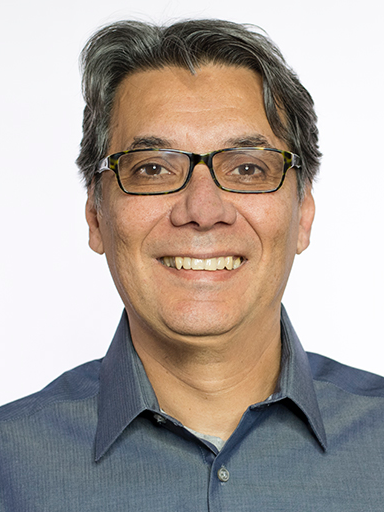
Vladimir Alves
Co-founder/CTO
NGD Systems
Vladimir Alves is co-founder/CTO at NGD Systems, where he focuses on developing SoCs that implement intelligent storage technology for data centers and fog computing. He has developed SoC-based solid state solutions for over 10 years, during which his teams have released many enterprise SSD controllers. Before co-founding NGD Systems, he was Sr Director of SSD SoC Development at Western Digital and STEC. He is the author of over 30 scientific publications on subjects including SoCs and computer architecture, and the co-author of over 20 patents. He earned his PhD in microelectronics from the National Polytechnic Institute of Grenoble, France.
Abstract: Intelligent Storage Produces Efficient Scalable Systems
The data tsunami keeps growing, and organizations must do more with the massive amounts of data they collect. Intelligent storage brings processing power where the data is, avoiding time and bandwidth-consuming transfers and reducing the strain on network capacity and central processing nodes. It can actually execute many important algorithms, including those needed for AI, machine learning, signal and image processing, and real-time analytics. It also makes systems scalable - adding more nodes provides the ability to handle future exabyte and zettabyte data stores. Case histories are available today, showing how computational storage greatly improves the performance of financial, database, robotics, security, surveillance, biotechnology, and military/defense applications.
About NGD Systems:
At NGD Systems, we produce an innovative Intelligent platform that allows users to create, manage, and execute applications within our SSD storage solutions via our In-Situ Processing. This allows users to utilize core platforms in Storage, Content Delivery, Server, Rack and Power solutions that allow for an optimal SW and HW ecosystem. The creation of a Computational Storage platform furthers the storage architect’s ability to scale their Storage needs. More information is available at NGD Systems
Keynote 15:
Make Your SSDs Smart: It Pays Off Big in Application Performance
Thursday, August 9th, 12:10-12:40pm

Dr. Manuel d’Abreu
Sr VP, and Chief Scientist
Smart IOPS
Dr. d'Abreu is the co-founder, Sr VP, and Chief Scientist at Smart IOPS, a developer of high-performance SSDs, and appliances. At Smart IOPS, he drives technology roadmap, development of new products, and innovation. Before co-founding Smart IOPS, Dr. d'Abreu was a Fellow at SanDisk, where he worked on error correction codes, flash technology, and reliability, and managed efforts in NAND, SSDs, controllers, and test. Dr. d'Abreu has over 35 years of experience in the semiconductor industry. His expertise spans system-on-chip and system-in-package design, test and manufacturing, signal processing, flash storage technology, and coding theory. He also has extensive experience in business development, raising capital, developing business plans, building teams, and technology management. An active member of the professional high technology community, he has been an advisor to the National Science Foundation and an Adjunct Professor at Santa Clara University. He is an IEEE Life Fellow, and his work has been published in or presented at more than 50 technical conferences and journals. He has been granted over 60 patents with many more pending. He holds a PhD from the University of Texas at Austin.
Abstract: Make Your SSDs Smart: It Pays Off Big in Application Performance
SSDs have rapidly become the biggest storage buy in enterprises and clouds. One way to make them even more powerful is to add intelligence that allows them to do some of the processing for common applications (so-called "storage compute"). Either manufacturers or end users can provide the required programs. For example, an intelligent SSD could perform tensor flow for AI applications, acceleration for genomic analysis, deep neural nets for decisionmaking, pattern-matching for deep packet inspection, or algorithms for signal or image processing. Not only does this approach make SSDs more useful, but it also reduces the demands on networks and central processing facilities and increases scalability (since you can add to a system's capabilities simply by adding SSDs).
About Smart IOPS:
Smart IOPS is an innovative leader in storage solutions whose TruRandom™ technology creates new possibilities for flash technology to have a profound impact on current and next generation data center applications. Powered by TruRandom, Smart IOPS SSDs substantially increase IOPS and bandwidth to remove the I/O storage bottleneck that severely limits the modern data center. Smart IOPS’ flash storage solutions enable Cloud Service Providers (CSP), High-Performance Computing (HPC) and enterprise data centers to confidently deploy I/O-intensive applications with greater reliability and SLA, at a fraction of the cost of other flash-based storage products. More information is available at Smart IOPS.
Keynote 16:
Applications Need More Than IOPS and Latency
Thursday, August 9th, 12:40-1:10pm
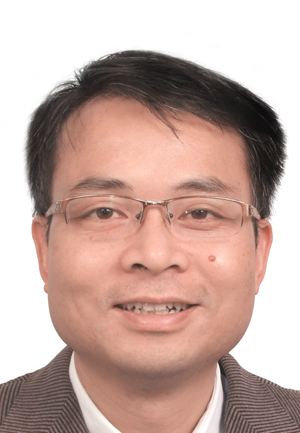
Eric Zhao
SSD General Manager
Huawei Technologies
Eric Zhao is SSD General Manager at Huawei, where he has worked for over 17 years. In his previous positions, he has worked on infrastructure solutions engineering, storage/data as a service, data management, data protection, and video, IoT, and big data solutions. He has been in charge of the global customer support team, working with engineering R&D to handle solution design, implementation, and maintenance. He has also spent time working on networking technologies research and core router testing.
Abstract: Applications Need More Than IOPS and Latency
SSD vendors generally emphasize how many more IOPS their latest products can handle and how much lower the latency is. However, actual applications often don't benefit much from the improvements. The bottlenecks simply move to another part of the system. System designers must take a holistic view, and match network throughput, storage bandwidth, and algorithms all together to end up with better application performance.
About Huawei:
Huawei is a leading global provider of information and communications technology (ICT) infrastructure and smart devices. With integrated solutions across four key domains – telecom networks, IT, smart devices, and cloud services – we are committed to bringing digital to every person, home and organization for a fully connected, intelligent world.
Huawei's end-to-end portfolio of products, solutions and services are both competitive and secure. Through open collaboration with ecosystem partners, we create lasting value for our customers, working to empower people, enrich home life, and inspire innovation in organizations of all shapes and sizes.
At Huawei, innovation focuses on customer needs. We invest heavily in basic research, concentrating on technological breakthroughs that drive the world forward. We have more than 180,000 employees, and we operate in more than 170 countries and regions. Founded in 1987, Huawei is a private company fully owned by its employees. More information is available at Huawei



